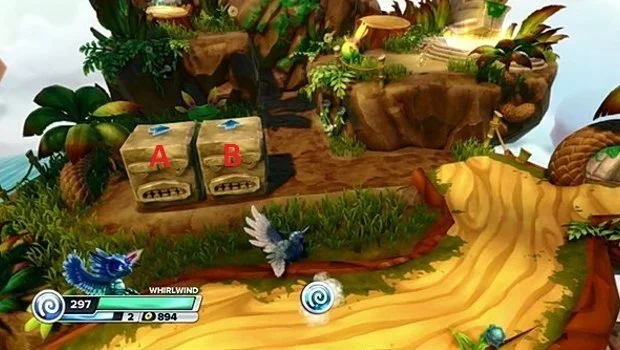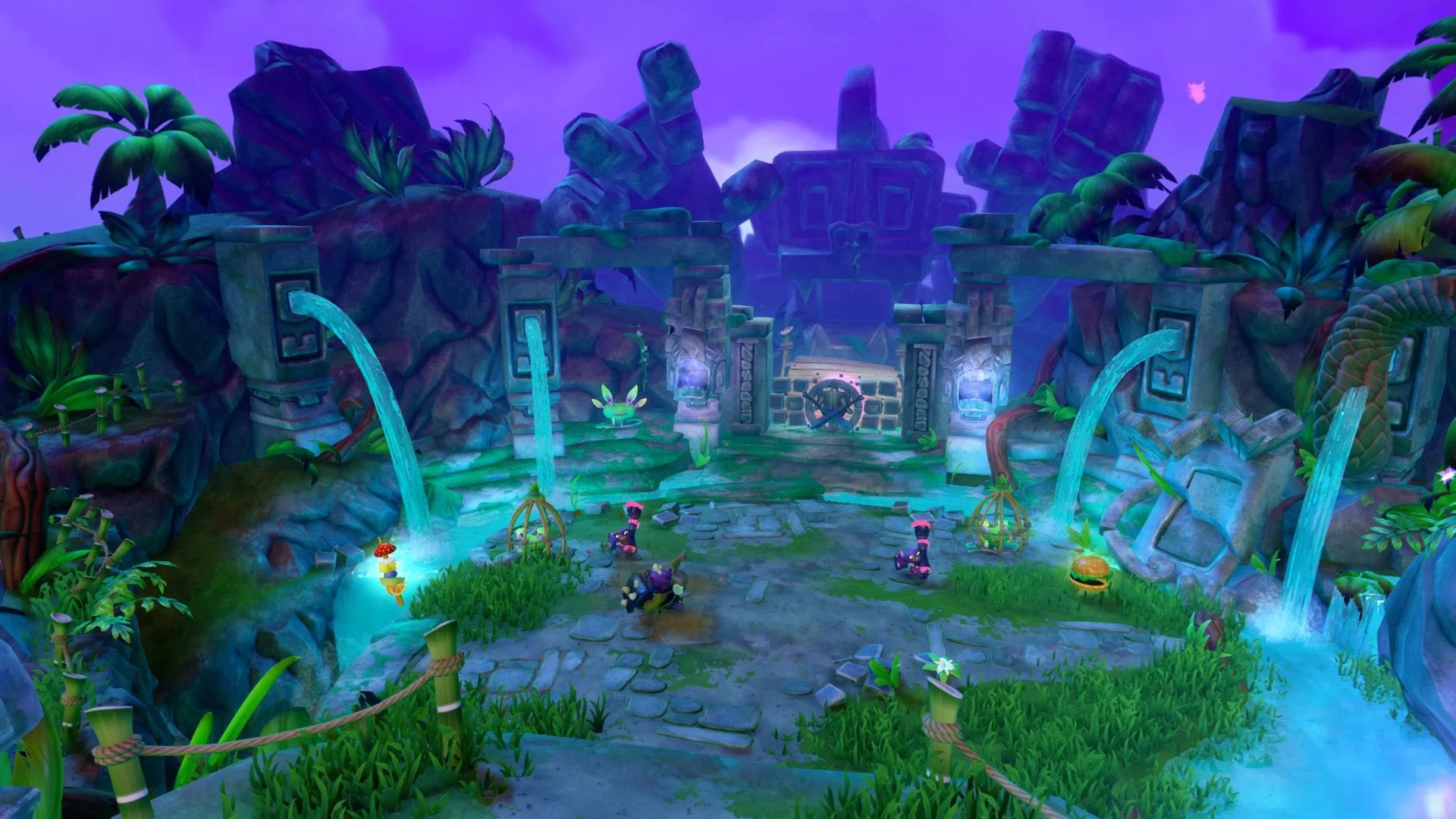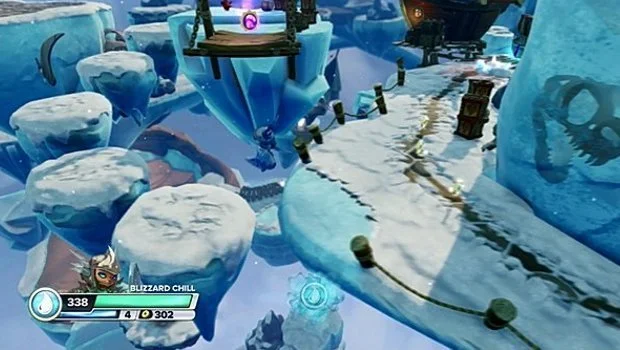
Skylanders: Swap Force was VV’s first console Skylanders game and the first title I worked on at the studio. Our character gimmick was that each toy had a top and bottom half, each with a unique ability, held together by a magnet. They could be split apart and mashed together with another character at any time to create one of 256 unique combos. We also added the ability for characters to jump.
Swap Force was developed over 24 months with a team of ~150 using VV’s internal Alchemy engine and Peaches toolset.
What I worked on:
I was the level owner for Rampant Ruins and Boney Islands. Later in development, I handed off Rampant Ruins to another designer for polish and bug fixing and took over the redesign of Cascade Glade. This included:
Creating the initial pitch document (Rampant Ruins and Boney Islands)
Level blockout and cameras
Creating the mechanics in engine including custom components. More complicated mechanics, such as the sled ride in Boney Islands, were a collaboration with engineering.
Working with art to develop themes and landmarks for each level
Creating encounters
Creating puzzle layouts
Never ask the same question twice
We treated each puzzle and encounter as a question with the goal of never reusing a setup within a level. Ideally, we would never reuse the same setup within the entire game. This is not a unique philosophy at all in game design; Bungie uses something very similar with Destiny encounters. But it’s especially useful when designing a kid’s game. During design reviews, you could often find leads assigning arbitrary letters or numbers to enemy types and writing out each encounter and comparing them with lists from other levels to ensure designers were being diligent about this.
This is the initial pitch document for Wildwoods 3 aka Rampant Ruins (Maille_Wildwoods3_pitch.pdf)


